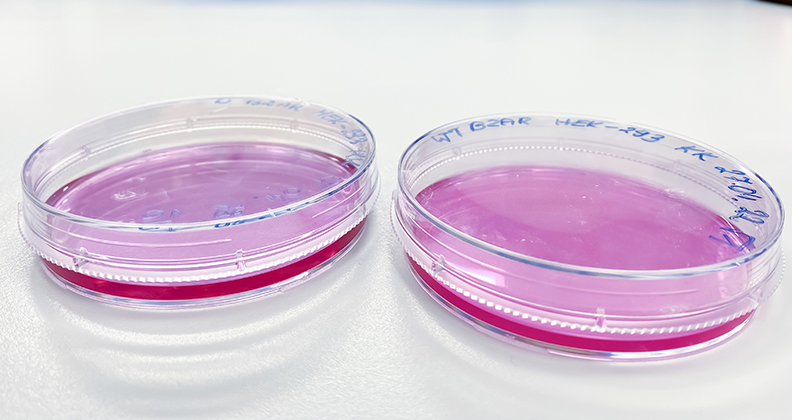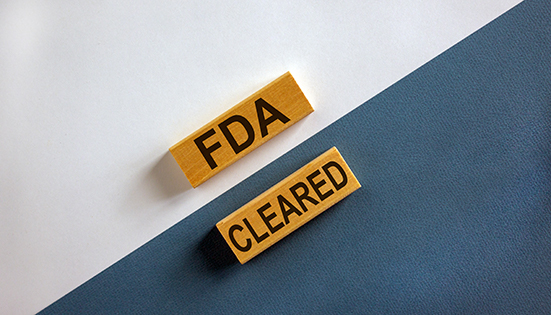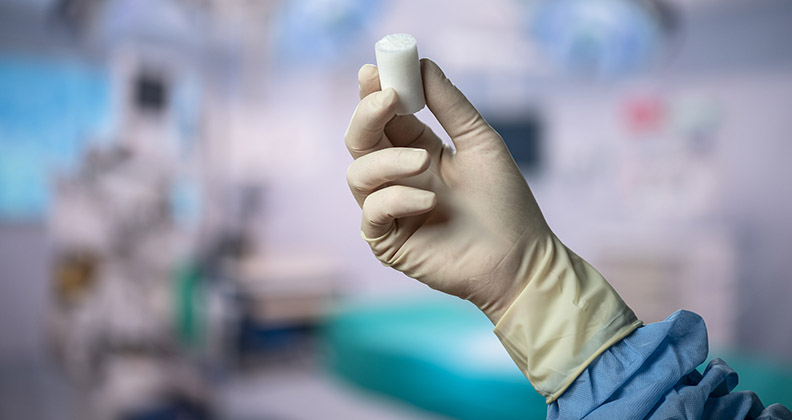
Biocompatibility assessments of new orthopedic devices are complex and filled with potential potholes that can delay the market launch of new products. Danese Joiner-Fox, Ph.D., Senior Manager of Regulatory Affairs at Stryker Sustainability Solutions, said the difficulties typically fall into three main categories:
Time. Constraints often arise from deadlines associated with regulatory submissions, financial limitations and marketing initiatives. Product development projects have strict deadlines, making time management a significant factor during biocompatibility assessments.
Cost. Product development projects operate within budgets, and there may not be enough funding for repeat biocompatibility testing. This necessitates careful planning to ensure that resources are used efficiently and that testing is done correctly the first time.
Samples. During product development, changes in device design, manufacturing or processing can result in the final product not being available for testing. In some cases, testing may need to be conducted on preliminary versions or samples that are not fully representative of the final device, adding a layer of difficulty to the assessment process.
Dr. Joiner-Fox said that these constraints make it difficult to address the recommended endpoints in FDA’s biocompatibility guidance document, which clearly outlines expectations based on the device category, contact type and duration.
Dr. Joiner-Fox stressed the importance of addressing all recommended biocompatibility endpoints as outlined by FDA. Failing to do so is a sure way to receive deficiencies from the agency. “The guidance states what’s expected,” she said. “If there is any doubt, reach out to FDA for clarification.”
Managing Common Concerns
Comparing representative samples used in physical testing to the finished device is not always a straightforward process. Although this comparison can be difficult, it is a critical component of the biocompatibility assessment process that regulatory bodies like FDA expect companies to address.
In addition, companies sometimes focus solely on the biocompatibility of the material, overlooking the effects of manufacturing processes, the geometry of the device and the method used to sterilize it. “However, these factors are integral to the biocompatibility of the finished device and must be considered,” Dr. Joiner-Fox said. “This is especially important when using an approach common in the industry — leveraging biocompatibility information previously submitted to a regulatory agency.
Identifying the specific submission in which this biocompatibility information was originally submitted can be challenging, according to Dr. Joiner-Fox. Moreover, she said, it can be difficult to pinpoint and communicate to reviewers the relevant details within those submissions that support the biocompatibility of the current device. This is particularly pronounced for companies that have acquired others, resulting in a large and diverse body of historical information across different device families. Managing this evidence can quickly become cumbersome.
Additionally, if the full test report was not submitted to the agency, obtaining it from an external lab might be tricky.
“Companies often compile internal reports to accompany external lab reports,” Dr. Joiner-Fox said. “Ensuring that all relevant documentation is available and complete adds another layer of complexity to the process. When merging internal and external reports, ensure that the data is consistent and comprehensive.”
Another complex area involves strategies that rely on chemical characterization to address biocompatibility.
“While chemical characterization can be valuable for certain endpoints, it is not universally accepted for all,” Dr. Joiner-Fox said. “I’ve seen companies attempt to use it as a catch-all solution, leading to prolonged discussions with regulatory authorities. This approach is rarely successful. It’s important to carefully consider where chemical characterization is appropriate and where it is not.”
When chemical characterization is used, Dr. Joiner-Fox said to carefully consider the right extraction vehicles and worst-case patient exposure scenarios for the extraction process. Additionally, ensure that you’re using appropriate analytical methods, with suitable limits of detection, and that you assess the risk associated with each biocompatibility endpoint.
Strike a balance between providing necessary information and avoiding extraneous details in your biocompatibility submissions, Dr. Joiner-Fox said. “Overloading the documents with unnecessary information can confuse the reviewer, cause delays and generate unwarranted or difficult-to-answer questions,” she added. “This can lead you down a path that might have been avoided with more focused and relevant documentation.”
Ensure that you fully describe the biocompatibility testing conditions for specific devices, including deviations from established protocols, as well as the results and testing conclusions. Dr. Joiner-Fox suggests that orthopedic companies refer to FDA’s guidance document for the recommended content and format of nonclinical bench performance testing when preparing test reports for biocompatibility assessments.
Dr. Joiner-Fox also stressed the importance of linking your findings back to the relevant endpoints. “Reviewers will likely scrutinize this connection, and a lack of relevant data to support the biocompatibility assessment will raise questions that could delay the review process,” she said.
Multiple instruments often accompany implants, and conducting extensive assessments on each can be impractical and financially burdensome. “Despite these difficulties, adhere to FDA’s guidance on addressing endpoints for Class II or higher instruments associated with the implant,” Dr. Joiner-Fox said.
Crafting the Narrative
Helin Räägel, Ph.D., Principal Biocompatibility Expert at Nelson Laboratories, is a strong advocate for taking a moment to stop and think before jumping into biocompatibility testing. “It’s crucial to understand that not all medical devices carry the same risks,” she said.
For example, a plate made of a well-known material like titanium has a much different risk profile than a 3D-printed device that is designed with structural complexities.
“While both devices are implanted into bone or tissue and require the assessment of similar endpoints, the risks they pose are very different,” Dr. Räägel said. “It’s important to recognize this difference from the outset, as it will guide your testing strategy. Understanding the inherent risk of each device is key to planning your biocompatibility assessment effectively.”
Dr. Räägel recommends telling the story of your product to reviewers. “A well-crafted narrative not only makes the data more accessible but also helps the reviewer understand the logic, rationale and care that went into your product’s development,” she said. “This approach can make all the difference in successfully navigating the review process.”
This story — the Biological Evaluation Plan — needs to capture the device’s purpose, its composition and how it’s made. It should also identify and address the known biocompatibility risks and what needs to be proven to ensure the device is safe for patient use.
“The Biological Evaluation Plan must weave together these aspects into a coherent narrative,” Dr. Räägel said. “It’s not just about presenting data. You need to demonstrate a thoughtful and comprehensive approach to ensuring the safety of the device. This story should guide the reviewer through your evaluation process, clearly showing that all risks have been considered and addressed.”
Dr. Räägel acknowledged that the growing complexity of medical devices has changed the testing landscape. “If you’re using an innovative method or deviating from standard practices, involve the reviewer early in the testing process,” she said. “Share your testing plan and get their input to ensure you’re on the right track. This way, you can avoid the need for retesting and make the most efficient use of your resources.”
The ISO 10993 series of tests include biological assessments, both in vitro and in vivo, as well as analytical chemistry tests like those in ISO 10993-18. “Each test has its strengths and limitations, so you need to choose the right tool for the job,” Dr. Räägel said.
For example, she said chemical characterization is a valuable tool, but it cannot address every endpoint on its own. When testing instruments with limited contact, explore other testing options to ensure that all relevant endpoints are addressed.
Scrutiny on particulates in submissions has increased in recent years, Dr. Räägel noted. “If particulates are present in your extractions, conduct a thorough investigation and document your findings and actions,” she said. “Address this issue comprehensively to meet regulatory expectations.”
First, characterize the particulates to understand what they are and determine their source. “This helps pinpoint whether the particulates are coming from the materials, manufacturing processes or are introduced during sample preparation in the lab,” Dr. Räägel said. “Rusting could occur due to exaggerated conditions used during extraction, which may not reflect real-life scenarios.”
Investigate whether the presence of particulates is a consistent issue or if it appears to be isolated. “FDA will want to know if your manufacturing process is reproducible, so you must be prepared to answer that question,” Dr. Räägel said.
Above all, assess whether there is any risk to patient safety. “The ultimate goal is to ensure that the particulates will not harm patients,” Dr. Räägel said. “All findings and investigations must be thoroughly documented. If it’s not documented, it’s as if it didn’t happen. Make sure you include accurate documentation and justification in your submission.”
DC
Dan Cook is a Senior Editor at ORTHOWORLD. He develops content focused on important industry trends, top thought leaders and innovative technologies.




